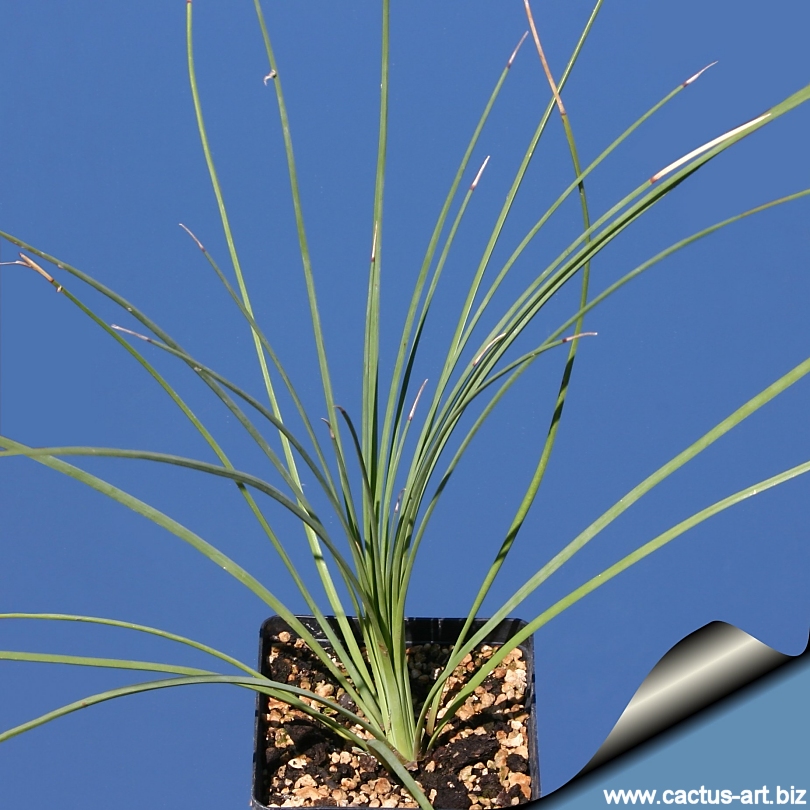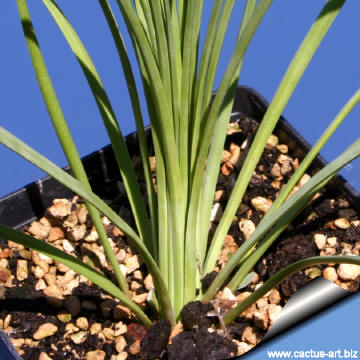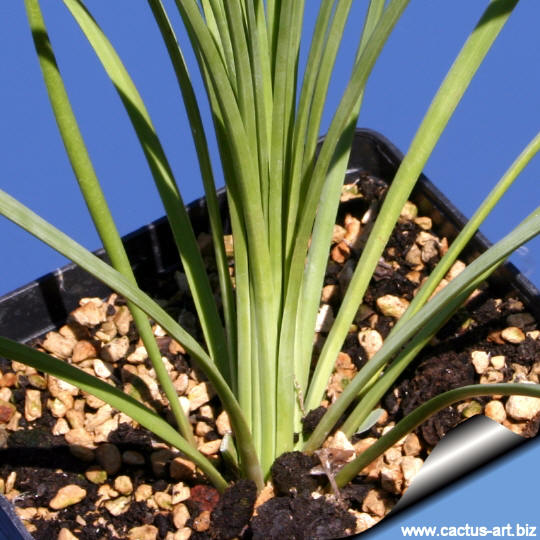|
|
|

Dasylirium quadrangulatum
This is one the most dazzling of the Dasylirions, most resembling
the genus Xanthorea, the grass trees of Australia. It is an extremely
graceful and very symmetric plant forming a shimmering orb of fine
grassy leaves that tremble beautifully in the slightest breeze.
|
|
 |
 |
|
Cultivation:
Dasylirions are slow growing, carefree
and durable
drought tolerant
plant. However, they grow faster if watered
well (don't water the crown, though they rot easily).
In the garden they should be placed in a
sunny, well-drained area with additional summer water in dry climates.
These make great specimen plants for xeriscape gardens and
blend well in either tropical or arid gardens.
Small plants are relatively inexpensive, but larger ones are a fortune.
These make excellent potted specimens,
and their symmetrical form provides a striking focal point. They thrive
best in full sun, but can be grown with some shade and humidity. Plant
in very fast draining soil and provide little or no water in winter.
Treat like a succulent. Best where winter temperatures stay above 10° C,
but can take some periods of frost. Plants in containers can be moved
inside during longer cold spells.
Propagation:
Easy to propagate from seeds or cuttings (If
available). |
|


Advertising
|
|
|
|
|
Family: Agavaceae (Agave
family) but it is now considered to be in the Nolinaceae family (with Nolina
and Beaucarnea)
Scientific name: Dasylirion
quadrangulatum
Origin:
Fairly limited in range in northeastern Mexico
Common English Names include: Mexican Grass Tree, Bear
Grass, Sotol
Taxonomy: The D.
longispinus
complex
comprises 2 very similar species D. quadrangularis and
D. longissimus both characterized by long, narrow,
quadrangular leaves with reduced or absent marginal spines.
Synonyms:
|
|
Description:
D.
quadrangularis is a slow growing durable evergreen shrub
that looks like a miniature palm with a large spherical clump of very
stiff grassy leaves, eventually forming (after many many years) a
solitary trunk up to 100(-150) cm tall (although sometimes
multiple heads are produced), most resembling the genus Xanthorea, the
grass trees of Australia. (completely unrelated, though) Even the flower
spikes look similar. Withstanding intense drought, they can live more
than 150 years.
Leaves: The leaves radiate symmetrically from the trunk to form a
2-2,50 cm wide rosette. They are glaucous-green
larger at the base and narrowing farther out on the leaf.
(usually less than 5 mm wide) quadrangular in
cross section, completely unarmed, with smooth or
slightly rough margins with no distinct teeth and long (the more
shade it's in, the longer the leaves). They can stretch
up to 120 cm or more. Older leaves droop around the base, forming a
shaggy mantle that collects water and provides support. But in
cultivation the bottom leaves can be trimmed exposing an ornamental
symmetrical spiral leaf-base pattern that never fails to attract
comments.
Trunk: Large woody.
Flowers: Plants dioecious. It forms a 2-3 m
tall spike (of which the top 1/3-1/4 is the flowering section) of small
white, tan or cream flowers that emerge from reddish buds.
Blooming season: They may go years without
blooming, then send up the tall flower stalk in summer.
Fruit: If successfully fertilized, will produce a colourful
red-pink plume of tightly packed seeds where the flowers were earlier...
this all happens in the fall. Fruit are dry, indehiscent, 3 winged, with
a single seed.
|
|
|
|

|
|